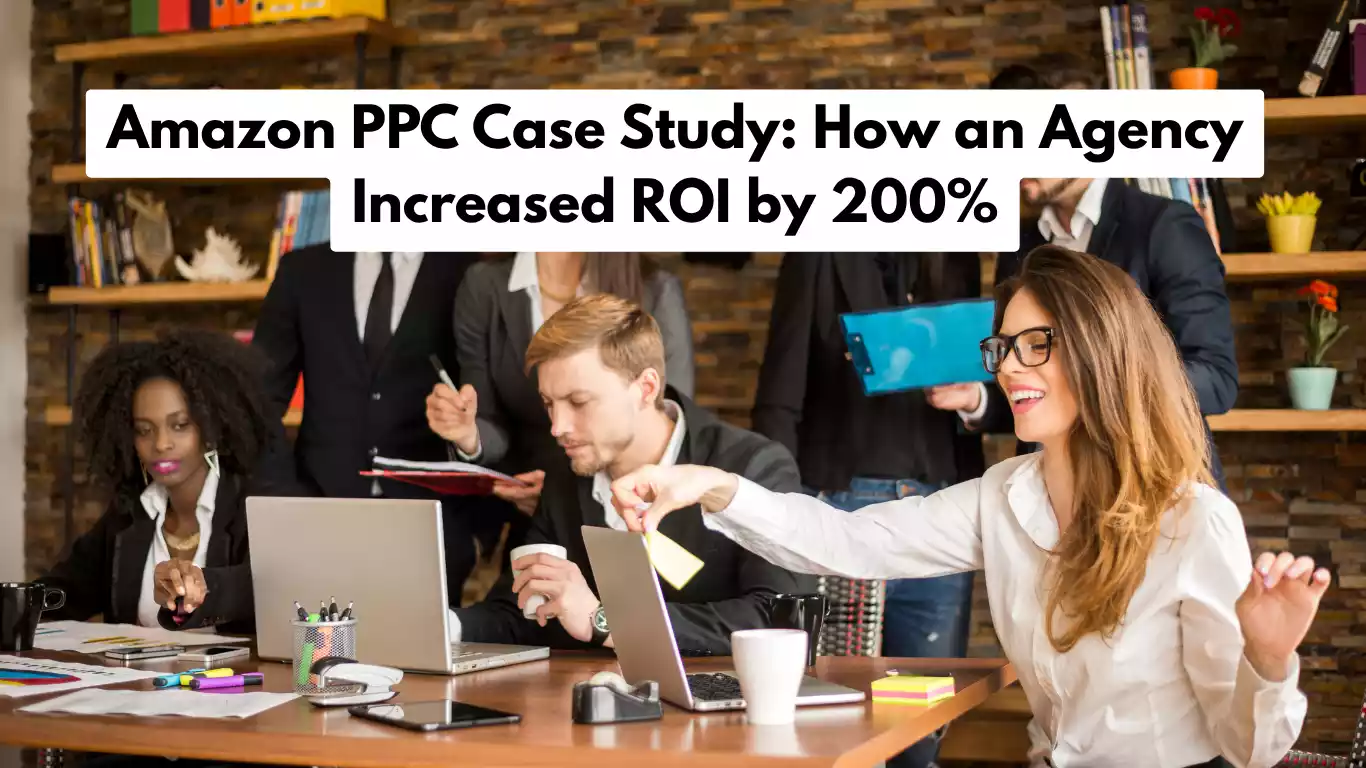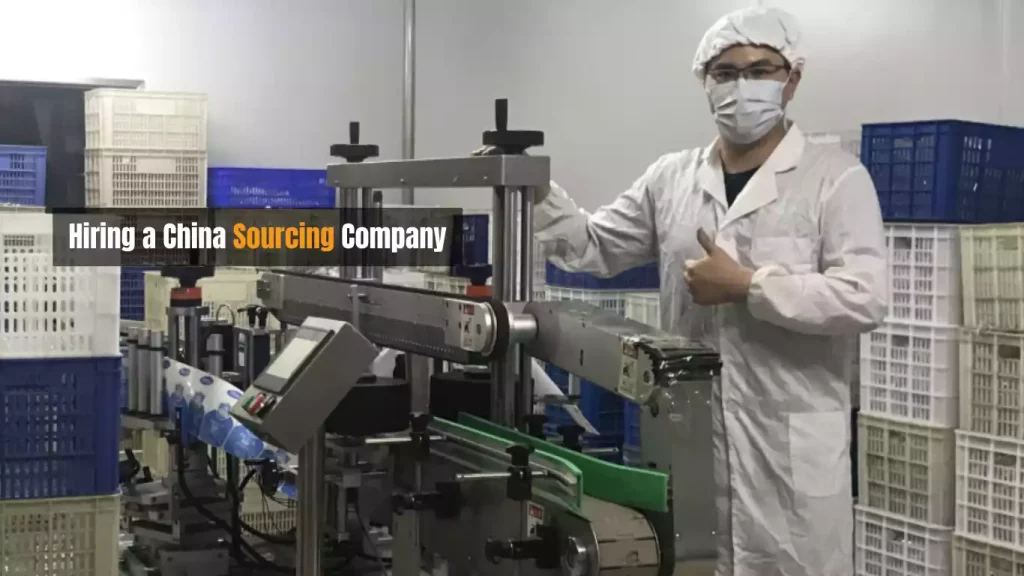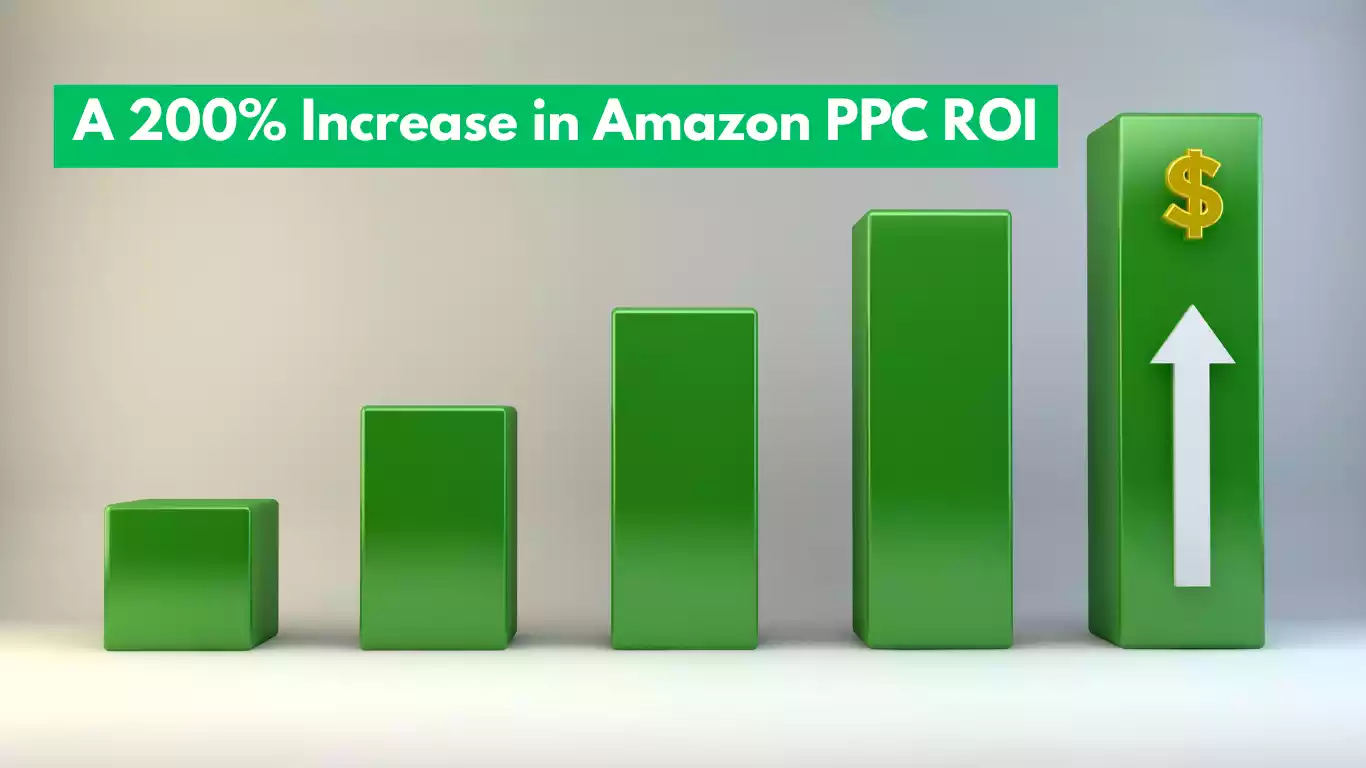
Amazon Pay-Per-Click (PPC) advertising is a powerful and essential tool for sellers. When managed correctly, it can launch products, drive massive sales, and build brand dominance. When managed poorly, it becomes a black hole, consuming thousands of dollars with little to show for it.
Many sellers hit this wall. They have a great product, but their ad campaigns are a mess. This is the exact situation Active-Go, a promising fitness accessory brand, found itself in before hiring an agency.
This Amazon PPC case study outlines the challenges they encountered, the strategy the agency implemented, and the remarkable results achieved. It is a real-world example of how expert management can turn a failing ad account into a profit-generating machine. This is a true amazon ad agency success story.
Active-Go is a brand that sells high-quality, mid-priced fitness gear, primarily resistance bands and yoga mats. The products had excellent reviews, but their growth on Amazon had completely stalled.
The brand’s owner was managing the PPC campaigns, spending several hours a week trying to follow online tutorials. Despite this effort, the account was in disarray.

When the agency took over, it identified several critical issues that were crippling the brand’s profitability.
The account’s blended ACOS (Advertising Cost of Sale) was 55%. With their product margins, “Active-Go” was losing money on almost every single ad-driven sale. They were effectively paying Amazon to give their products away.
The account was a chaotic mix of campaigns. Dozens of old, paused campaigns were mixed in with active ones. Auto campaigns were running with high bids, spending money on irrelevant search terms. It was impossible to tell what was working and what was not.
A quick look at the Search Term Report revealed the biggest problem. The auto campaigns were matching their “resistance bands” to broad, expensive terms like “at-home workout,” “gym membership,” and even “personal trainer.”
This single mistake meant thousands of clicks were coming from shoppers who had no intention of buying their product. This is a classic, costly error.
Despite the high ad spend, total sales were flat. The ads were not just unprofitable; they were also failing to increase the products’ organic rank. The high ACOS was not even a “loss-leader” strategy; it was simply a loss.
The agency immediately implemented a systematic, 4-phase plan to stop the bleeding, rebuild the account, and scale for profitability. The goal was to improve the Amazon PPC ROI (Return on Investment) as quickly as possible.
Before changing a single bid, the agency performed a complete account audit. They analyzed every campaign, ad group, and search term report from the past 90 days.
The first action was triage. They identified the “top 10” worst-performing keywords and campaigns that were responsible for 80% of the wasted ad spend. These were immediately paused. This simple step stopped the account from “bleeding” money overnight.
With the immediate fires put out, the team began rebuilding the account from the ground up. All old, messy campaigns were paused, and a new, logical structure was created.
This new structure included:
Brand Defense Campaigns: A campaign focused only on “Active-Go” brand terms, ensuring no competitor could steal sales from customers searching for them by name.
This phase is where the daily work of PPC management happens. The agency focused on two key activities.
First, they implemented an aggressive negative keyword strategy. Every day, they reviewed the search term reports from the new auto campaigns. Any irrelevant term, like “cheap,” “free,” or “reviews,” was immediately added as a “negative exact” match. This trained the Amazon algorithm to stop showing their ads to the wrong people.
Second, they began keyword harvesting. When they found a search term that converted into a sale in an auto campaign (e.g., “heavy-duty resistance bands for men”), they would move it. They would add it as an exact-match keyword in their manual campaign, where they could control the bid precisely.
Once the account was stable and the ACOS had dropped to a profitable level, it was time to scale. This is how they truly boosted the Amazon PPC ROI.
The agency began to carefully increase the budget, focusing only on the campaigns and keywords that had proven to be profitable. They also expanded into new ad types.
They launched Sponsored Brands video ads to capture attention at the top of the search results and Sponsored Display ads to retarget customers who had viewed “Active-Go” products but did not buy.

This systematic approach transformed the “Active-Go” ad account. The results after six months were a complete turnaround and a perfect example for an amazon ad agency success story.
The agency measured ROI as ROAS (Return on Ad Spend), which is the most direct way to measure ad performance.
Metric | Month 0 (Before Agency) | Month 6 (After Agency) | % Change |
Monthly Ad Spend | $10,000 | $12,500 | +25% |
Monthly Ad Sales | $18,000 | $71,250 | +295% |
ACOS | 55.5% | 17.5% | -68% |
ROAS (ROI) | 1.8 | 5.7 | +216% |
The primary goal was achieved. The ACOS was slashed from a disastrous 55.5% to a highly profitable 17.5%.
This efficiency directly led to the 216% increase in ROAS (Return on Ad Spend), the primary metric for Amazon PPC ROI. Before, “Active-Go” was getting $1.80 in sales for every $1.00 spent. After, they were getting $5.70 for every $1.00 spent.
The most impressive result was on the entire business, not just the ads. As the efficient PPC campaigns drove more sales, the products’ organic rankings began to climb.
The flagship resistance bands product, which had been stuck on page 3, was now in the top 5 results on page 1 for its main keyword. This created a “flywheel effect.”
The ads drove sales, which increased the organic rank. The high organic rank led to more free, organic sales, which further improved the TACOS (Total Advertising Cost of Sale).
This turnaround was not magic. It was the result of a proven methodology, data-driven decisions, and consistent daily management. This amazon ppc case study provides several key lessons for sellers.
A disorganized account will always fail. A clean, logical campaign structure is the foundation for all successful PPC management. It allows you to control bids and budgets effectively.
You cannot scale an unprofitable account. The first step is always to stop wasted ad spend. This is done by aggressive use of negative keywords and pausing campaigns that are not working.
PPC requires daily attention. Keywords must be harvested, and bids must be adjusted. The market changes every day, and your campaigns must adapt with it.
The ultimate goal of PPC is not just to get ad sales. The goal is to increase your total sales velocity. Efficient ads are the fastest way to feed the Amazon algorithm and win long-term organic placements, which is where true, scalable profit comes from.
Active-Go went from burning money to running a highly profitable advertising machine. This amazon ad agency success story highlights the value of expert management.
Hiring an agency is not just a cost. It is an investment in expertise and time. By handing over the complex, data-heavy work of PPC, sellers can focus on what they do best: building their brand and sourcing great products.
A good number depends on your profit margin. A common target ACOS is 20-30%, or a ROAS of 3.0-4.0. However, this varies by product and goal.
ACOS (Advertising Cost of Sale) measures your ad spend against ad sales.5 TACOS (Total ACOS) measures your ad spend against your total sales (ads + organic).
You should see initial improvements (like a lower ACOS) in the first 30 days. However, a full account restructure and optimization, like in this case study, typically takes 3-6 months.
While true ROI involves profit, most agencies use ROAS (Return on Ad Spend) as the key metric. It is calculated by dividing total ad sales by total ad spend.